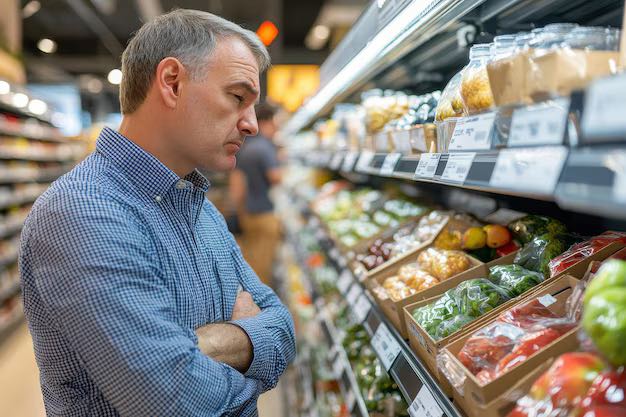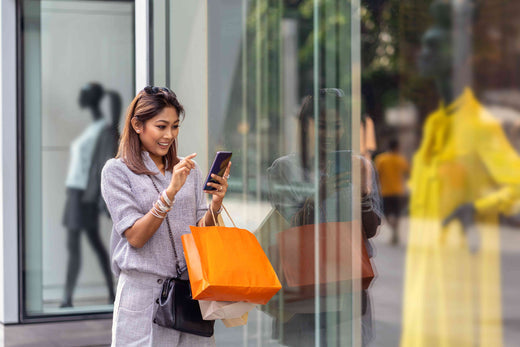
In-Store POS in an Infectious World
Contactless-First, No More Cash, Shopping Fluidity and Human Cashiers Rule!
The summer is upon us, and looking at the latest data, COVID-19 is going to be around for a while. While fortunately it’s not as deadly as originally feared for most Americans, the descent from the peak will not be a straight line. Flare-ups, as we open up, may be a harsh reality, as the virus continues to ravage too many vulnerable senior citizens and those with serious health issues.
A vaccine may eventually be produced, but in the meantime, it’s evident the economic damage and poverty caused by extreme lock-down policies may soon surpass the health-issues and death brought on by the virus itself, if it hasn’t already. With this in mind, we are opening up in regions across the nation.
Understandably, most everyone will be looking over their shoulder as they make their way back to main street. While these intense feelings will pass with time, the trauma is significant. The fear of future pandemics will result in permanent lessons learned that will change retail requirements forever. Many “old-school” retailers were already hurting from the new wave of commerce that’s emerged in the last decade, and sadly, won’t make it through this. But those who are planning to survive are doubling down on the future. These retailers are looking forward to winning abandoned market share with fresh specialty products and experiences for their shoppers, because one thing is for sure: The consumer will not stop shopping (safely)!
Retailers will flourish in part by gearing up for a new retail reality, and being responsibly prepared if we see another pandemic after this one is behind us. Under the pressure of necessity, some have already begun, and have pulled it off well in the limited channels available. However, when the doors reopen or as soon as possible thereafter, in-store spaces and experiences will need to be put in place too; modern, efficient, sanitary and fluid.
Hygienic POS systems and limiting shared touch-points will be paramount wherever we go now. Otherwise, retailers risk moral, legal and grave consequences. With the shadow of COVID-19 still over our heads, let’s review some common challenges and solutions retailers of all types need to consider:
Eliminating Cash
Viruses and bacteria love paper money. Getting rid of this multi-touched incubator of germs at the POS, is more important than any argument that persists for accepting cash.
If current legislation permits (or demands) cash-free environments in a location, it’s an easy decision to not take cash. If you must accept cash, keep only one lane open that accepts it, and funnel shoppers to cash-free lanes and/or mobile checkout.
Swapping Out Hardware that Requires Shoppers to Touch
If a POS system or credit card payment device has a stylus, interactive touchscreen for input, or buttons for PIN or NFC activation, it’s inconceivable to use these going forward.
The solution is to replace over-engineered and germ-festering payment devices with modern hands-free offerings from providers like Square or PayPal. Customers may still use physical cards, but these modern solutions no longer require signature or PIN entry, so there is no interaction with the payment hardware. Better yet, use of NFC payments like Apple Pay and Android Pay is made very easy with these solutions and are more popular than ever, providing a truly contactless, quick and ultra-secure experience. Offering digital receipts by email or text, moving the payment device farther from the register, and facing the printer so a customer can grab their own receipt, are other ways a retailer can show they’re serious about eliminating unnecessary touch-points and preserving the well-being of patrons.
Curb-side, Call-in and Omnichannel Fluidity when Disruptions Occur
Heavy and fixed POS workstations, payment devices, and peripherals are not suited to any kind of mobility, if the need arises to process transactions and fulfill goods outside the confines of a store. Sure, retailers have BOPIS and call-centers, but not everyone prefers to shop online when they’ve developed familiarity with their local shop, need consultative help, or want to peruse before they commit. Additionally, if other pandemics or events shutter in-store service, websites and call / chat centers can get quickly overwhelmed and unable to flex their capacity for peak, unplanned channel demand.
If mobility or curb-side processing and fulfillment are not a regular part of the retailer’s business, it doesn't make sense to have extra dedicated mobile terminals just for when outbreaks occur. Instead, fixed-lane terminals should be tablet based for effortless mobility if the need arises. Payment devices should be “Square-like” (a small, lightweight chip reading/NFC wedge), and no peripherals should be required for scanning, printing or other POS functions.
Retailers that are less concerned about card-present security and walk-up volume demands, may be able to adopt a process of pre-paying by phone, and will need capable and fast in-store systems to keep up and flex with sporadic peak demands.
The bottom-line is brick-and-mortar employees may serve in-store on a Monday, curb-side on a Tuesday, and always need visibility into every channel - phone and online orders included. The in-store POS along with e-commerce and the back-office, must be fluid and capable of adapting to ever-changing scenarios
A POS Clerk is the Safest Way to Go
Prior to COVID-19, there was an ongoing debate that self-serve kiosks aka “Grab and Go” delivered more value to retailers versus the costs and trade-off of having human cashiers. Now the tables have turned: Self-serve installations require hundreds, or sometimes thousands, of customers each day to touch the same scanners, payment devices and screens over and over again. Daily disinfecting, or disinfecting a few times a day, is the best one could hope for with these setups – really an irresponsible and dangerous approach to accommodating this technology.
To solve this issue, modern cashier-driven POS and clienteling solutions are by far the safest and most attainable model for checkout available in the market today. Rather than have everyone touch the POS or peripherals, only the clerk does. The clerk enters in emails and phone numbers if shoppers want to join loyalty programs. The clerk rings up the items using their personal scanner, or searches for products using their own fingers on a tablet or mobile phone. In addition to eliminating the exponential germ transfer from countless visitors touching the same hardware in self-checkout (one-to-many versus many-to-many pathogen exposure), clerks will also practice routine hygiene reliably, versus random shoppers who share an interactive POS solution throughout the day.
Another bonus of course is the human touch a clerk provides – a primary reason why shoppers flocked to retail before the crisis, and why they will continue to do so. If we just want to buy from a system, we can do that online really.
The points I’ve covered are system-focused. Of course, depending on specific environments and jurisdictions, there will be additional challenges and solutions in regards to capacity considerations, the type of retailer (e.g. specialty vs. food and beverage), and sanitation processes.
It’s easy to fear these changes, the investment required and why we are doing them, as consumers will justifiably have concerns about returning to main street. But they will test the waters sooner and more often than we may think, with pent up feelings and a desire to interact driving brick and mortar sales to new highs for the retailers who get it right. Retailers who pay attention and invest in the reality and perception of cleanliness, which includes modern “clean-looking” tech and real functional changes that promote safety, will provide comfort and safety to their patrons and flourish.


